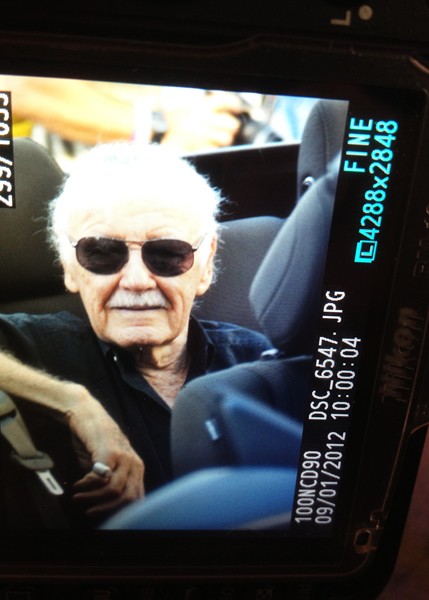It glows on the back of your camera like a homing beacon– drawing you to its display like a moth to a flame. You protect it. You rely on it (perhaps a bit too much?). But can you trust it? That question has been the subject of debate for quite some time, and the unfortunate answer you hear most often is, “It depends.” I suppose you could say that there are levels of trust. Personally, I have a love/hate relationship with my LCD. Think about it. The thing is practically useless on a sunny day. The times when I need it most– outside the controlled environment of the studio– are the same times that it almost always lets me down. The questions of whether to trust your LCD screen, and how much– if at all– can only be made based on personal experience. In order to answer these questions, it helps to understand what’s happening with your screen while you’re shooting.
What am I Looking At?
 There is a very common misconception that the image you see on the back of your camera is the actual image file. It’s not. If you shoot JPEG, what you are actually looking at is merely a preview of the image. It’s pretty close to what the shot will look like in Photoshop or Lightroom, but not exactly. So, if we are looking at a preview of the JPEG when we’re shooting in that mode, we must be looking at a preview of the RAW file if we’re shooting RAW, right? Not so fast. This is where the trust factor begins to erode. Even though your camera may be set to RAW capture, your LCD screen is still displaying a JPEG preview.
There is a very common misconception that the image you see on the back of your camera is the actual image file. It’s not. If you shoot JPEG, what you are actually looking at is merely a preview of the image. It’s pretty close to what the shot will look like in Photoshop or Lightroom, but not exactly. So, if we are looking at a preview of the JPEG when we’re shooting in that mode, we must be looking at a preview of the RAW file if we’re shooting RAW, right? Not so fast. This is where the trust factor begins to erode. Even though your camera may be set to RAW capture, your LCD screen is still displaying a JPEG preview.
Taking things a step further, if you’re someone who regularly shoots RAW, then you already know that a JPEG– even just a preview– is going to look better than an unedited RAW file prior to processing. In generating the preview, your camera has sharpened the image, as well as tweaked the saturation, color, and contrast. I’m not commenting on the merits, virtues, or advantages of one shooting mode over the other. Each has a place in my workflow. You need to know this stuff, however, if you are just learning to shoot and process RAW files. I once had a student come to class, put his camera down on the desk in front of me, and declare, “I swear there’s something wrong with this camera!” There was nothing wrong with his camera. He was learning his way around RAW and couldn’t figure out why there was such a big difference between how his camera and computer displayed the RAW images.
Sometimes You Gotta Zoom
How big is the monitor where you view and edit your photos? Regardless of whether you are working on a 15″ laptop or a 27″ desktop, it’s still a whole lot bigger than those three inches on the back of your camera. Your LCD screen is way more forgiving than your editing screen. Beside the fact that you are only looking at a preview on the camera itself, it is common for even significant blur to not show up until you’re looking at the image full-size. And this is where the zoom button becomes your friend. At least until you have a solid grasp on just how much your LCD is out to get you, I suggest zooming in nice and tight on your image to make sure it really is as good as you think it is. I am not talking about going overboard with the chimping (checking the LCD after every single shot). But if you wrap the shoot, send the client on their way, and wait until you get back to the office to discover that the image is soft, you’re going to have a whole lot of explaining to do, and quite possibly some money to refund.
There is no denying that the LCD screen is a valuable tool and has become an integral component of digital photography. But just like it’s important to know what your cameras, lenses, and lights can and can’t do, it’s also important to know your LCD’s limitations. Understanding what you’re looking at and whether you can trust it can make a huge difference in the success of your images.
Post originally from: Digital Photography Tips.
Check out our more Photography Tips at Photography Tips for Beginners, Portrait Photography Tips and Wedding Photography Tips.
You and Your LCD: A Matter of Trust



You must be logged in to post a comment.